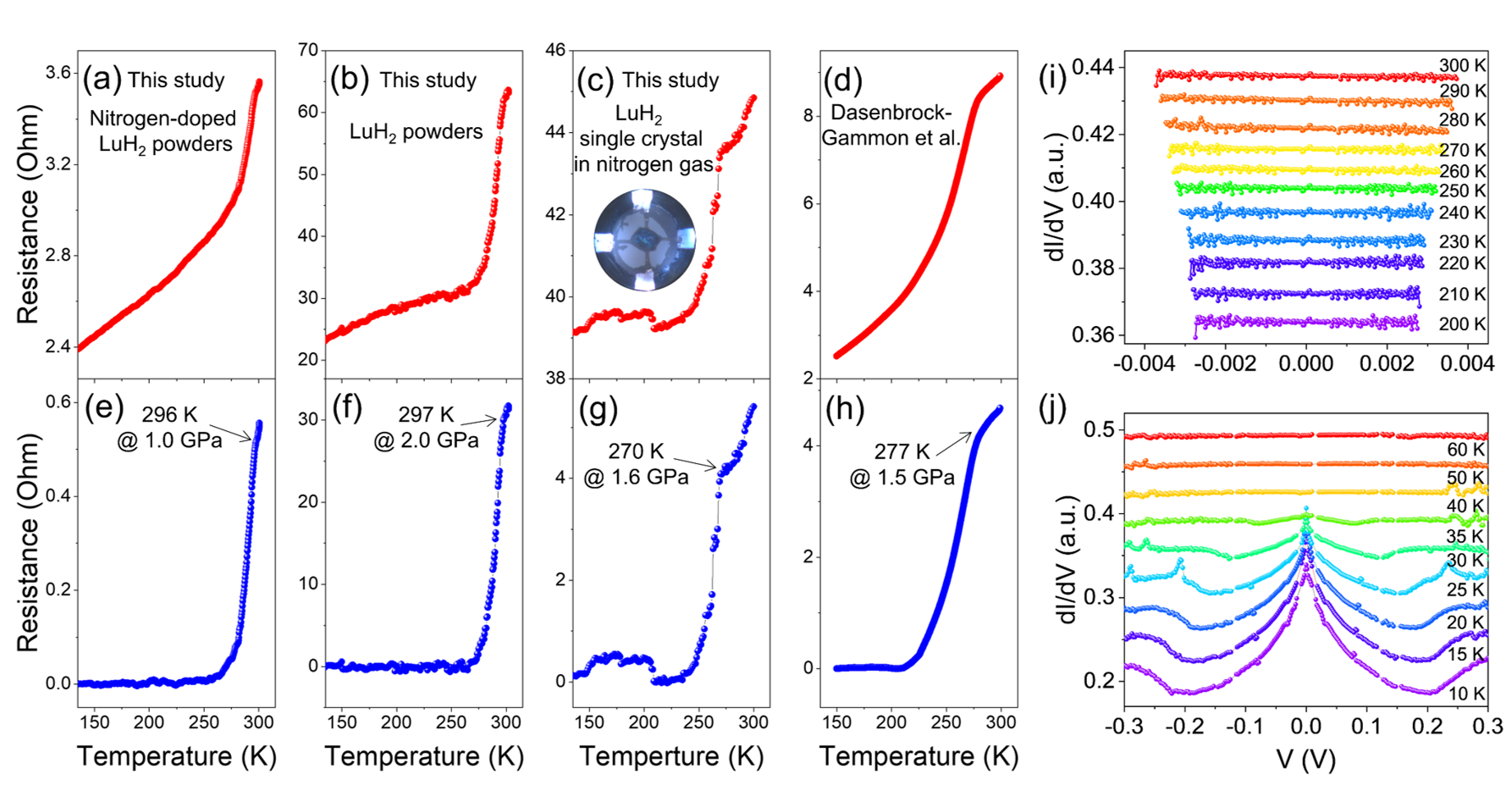New study from a team of HPSTAR scientists led by Dr. Yang Ding and Dr. Ho-kwang Mao, gave a reevaluation of the previous assertions of near-room temperature superconductivity in lutetium hydride systems. Published in the journal of Matter and Radiation at Extremes, the team deeply disputed the claims of achieving 294 K superconductivity at 1 GPa in nitrogen-doped lutetium hydride through comprehensive characterization and investigations and uncovered a pressure-induced metal-to-metal transition within lutetium dihydride (LuH2) – a revelation that recalibrates the scientific community's understanding of these materials.
Superconductivity – the elimination of electrical resistance in materials under specific temperatures – is a phenomenon with transformative potential for technological advancements, including lossless power transmission. The initial claims of near-room temperature superconductivity had ignited widespread enthusiasm and speculation regarding the future of energy and technology.
Through a serial of comparative experiments, the HPSTAR team unveiled that the reduction in electrical resistance previously attributed to superconductivity in LuH3 actually signaled a metal-to-metal transition in LuH2. This critical insight not only illuminates the complex properties of lutetium hydrides but also emphasizes the necessity of precision and thoroughness in scientific inquiry, particularly in areas poised to revolutionize technology. This discovery highlights the importance of distinguishing between similar phenomena to ensure accurate interpretations and advancements in the field.
"Our findings delineate a clear distinction between the actual behavior of lutetium hydrides under high pressure and the phenomena of superconductivity. This advancement in understanding not only propels the scientific community forward but also reinforces the imperative for meticulous validation in research," said Dong Wang, the lead author of the study and a PhD student of HPSTAR.
As the pursuit of room temperature superconductors advances, the diligent work by Dr. Ding, Dr. Mao, and their colleagues at HPSTAR is instrumental in guiding the path toward authentic, verifiable scientific breakthroughs, ensuring a foundation of rigorously tested knowledge for future innovations.

Caption: Comparative electrical resistance measurements of nitrogen-doped and pristine LuH2 in various forms and under pressures in range of 1-2 GPa. (a) Electrical resistance of nitrogen-doped, polycrystalline LuH2; (b) Electrical resistance of pristine, polycrystalline LuH2; (c) Electrical resistance of single-crystal LuH2 in a nitrogen gas. Inset: Optical photograph of the four-probe electrical resistance setup in a diamond anvil cell; (d) Data from Dasenbrock-Gammon et al.; (e)-(h) Resistance profiles after background subtraction, following the methodology of Dasenbrock-Gammon et al.; (i) Andreev reflection measurements from single-crystal LuH2 under 1.6 GPa in nitrogen; (j) Andreev reflection measurements from standard MgB2 for comparison, conducted under identical experimental conditions.
镥-氮-氢体系中1 GPa压力下的室温超导电性自报道以来备受各界关注。然而,其室温超导性的真实性和引起电阻下降的内在原因引起了很大的争议。北京高压科学研究中心(HPSTAR)丁阳研究员与毛河光院士带领的研究团队,对镥-氮-氢体系进行了全面的、系统的研究,揭示了所报道的镥-氮-氢体系中的电阻突变实际由LuH2引起而非LuH3,并且电阻突变实际是压力诱导LuH2发生了金属-金属的转变而非超导转变,氮对电阻转变的影响微乎其微。相关结果以“Unveiling a novel metal-to-metal transition in LuH2: Critically challenging superconductivity claims in lutetium hydrides”为题发表于近期的《Matter and Radiation at Extremes》上。
